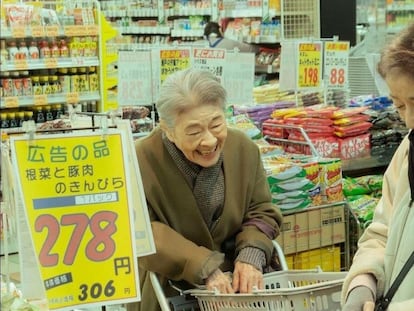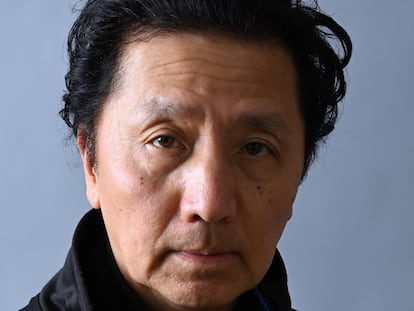‘Shōgun,’ James Clavell’s novel brought to life by a passionate historian and traditional theater actors
The ambitious FX historical series, available on Hulu in the U.S., is set in the time of the samurai and tells the story of courtly intrigue and a throne at stake. Matters are complicated even further by the arrival of the British and Western capitalism in Medieval Japan
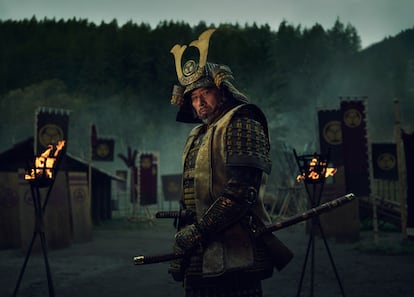

The Belgian Frederik Cryns, a professor of History at the International Research Center for Japanese Studies in Kyoto, remembers an old saying from his adopted country: “A samurai who does not know about poetry, traditional theater, or the tea ceremony, is not a samurai.” These and other disciplines, and not just katana fighting, appear in Shōgun (Hulu), whose plot is set in the time of these fearsome warriors. The show’s title refers to the leaders of the military government who at that time held the ultimate power in Japan, even over the emperors.
An expert in Japanese culture, Cryns was born in Antwerp (Belgium) and has lived two thirds of his life in Asia. He has spent the last three years advising the creators of the American miniseries, which revolves around several military leaders fighting for a vacant throne. As one of its directors, Jonathan van Tulleken, has explained on several occasions, the historical drama is the Succession of feudal Japan.
A strange squeak sounds as the historian walks barefoot through Nijo Castle in Kyoto. The 86,000-square-foot building complex has inspired many of the interior sets of the ambitious 10-episode miniseries, and every time the Belgian steps on the so-called nightingale floor of the 17th century building, the creaking wooden planks are reminiscent of these secretive birds’ song. “There is no official record about it, so there are those who interpret that it was a purely aesthetic occurrence and there are those who believe that it was a defensive system, to warn of the entry of intruders,” Cryns tells this newspaper, during a meeting with the international press organized by Disney+ (which is streaming the series internationally).
The duality of this architectural curiosity, halfway between sensory hedonism and times of war, is a perfect example of the important turning point in the history of Japan that is the setting for Shōgun. The story begins in the year 1600, in the final stages of the warlike Sengoku period and the time before the luminous Edo period.
The show has adapted the best-selling 1975 novel of the same name by James Clavell, which in turn inspired a previous miniseries in the 1980s, starring Richard Chamberlain in the lead role. The main characters in the television version are transcripts of the great Japanese figures from that seminal time in the country’s history. The story begins with the meeting between a British sailor, William Adams (called John Blackthorne in the novel), and Tokugawa Ieyasu (the on-screen feudal lord Yoshii Toranaga), one of the instigators of Japanese reunification. The real life leader’s main advisor Hosokawa Gracia was an aristocrat who had converted to Christianity. Her name in the drama is Toda Mariko, and she personifies the particular role that women played in that period of Japanese history.
This three-way meeting began the mutual influence that the Asian country and the West had on each other and that has continued to this day. It is, in short, the time in which capitalism sowed its seeds in Japan, “when the Portuguese and Spanish were roaming around,” recalls Cryns, in reference to the colonizers who also appear as antagonists in this story. “It was important to us that, unlike the first series, this time the Japanese and the Western points of view had the same weight. At that time, they each saw the other as a savage,” the consultant for Shōgun points out.

Every Tuesday, Disney+ releases a new episode of this blend of political drama, historical romance, Asian action series, and several other subgenres that meet in the complex plot. According to the entertainment company’s own data, the first of the three episodes that have already been made available exceeded nine million views worldwide in its first six days on the Disney+, Hulu, and Star+ catalog (depending on where the audience is watching). The standard that the platforms apply to count a viewing is the result of dividing the number of minutes played (in this case 690 million) by the total duration of the content (70 minutes for the pilot episode).
Almost everything in Nijo Castle was created with the same intent. It was a demonstration of the enormous power of those who inhabited it. “Its architecture, the motifs of the paintings on its walls, the disposition of its guests, everything had a meaning that established hierarchies,” the historian comments.
In the first episode of the miniseries, its creators show that the Japanese were living in merciless times in the style of Game of Thrones, the other recent HBO classic with which Shōgun is compared. The slightest misstep in feudal Japan meant a cruel death sentence. Or it activated the strict code of honor that promoted seppuku (what the West calls “harakiri”). It was a form of voluntary death that consisted of slitting one’s stomach and removing one’s own entrails as an offering to compensate for an offense. The punishment imposed killing the offender’s offspring, to completely eliminate his line of succession.
As for settings, this blockbuster has reconstructed rooms from several Japanese castles on a giant set in Vancouver, with no elements created after 1600. They have also manufactured a part of the city of Osaka on a full scale, to record exterior scenes. “It would have been impossible to do something like that in Japan, because the producers would not have found a space large enough,” the miniseries consultant explains while touring the interior of the Osaka castle tower.
On screen, the castle appears black. That was its color during the dark Sengoku era. Today the real building is white. “In the comments section of the series trailers that appeared on YouTube, there are protests at these types of changes, with commenters thinking that they are errors, when the opposite is true. They are changes that have been made to be faithful to the reality of that time,” Cryns comments with a resigned smile.
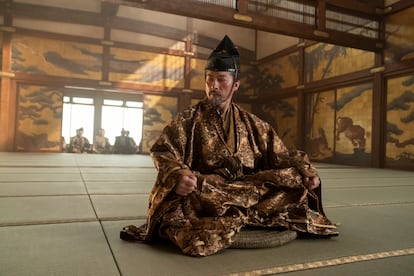
Obsession with Japanese culture
In kindergarten, Cryns remembers he was already obsessed with Japan. His best friend was from there. When his classmate returned to Asia, they kept in touch by letter into their twenties, but his relationship with Japan has lasted much longer. It has been his home for the last 35 years. Watching the first television adaptation of Shōgun in his youth encouraged him to take the step of moving to his dream destination.
These days he has become one of the leading experts on the Sengoku era for the Japanese media. Before collaborating with the American production, he had already investigated the historical traces of the three real people behind the show’s main characters and had published several books about them. The next release will be an book about the sailor William Adams that he is preparing for publication in June.
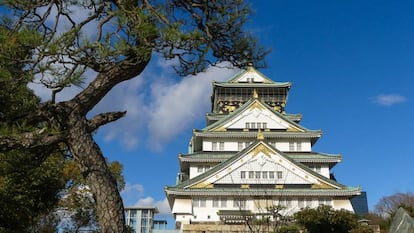
Cryns’ commitment to historical accuracy means that he went to great lengths to establish each character’s placement in each scene, to define the way in which they move, sit, or use their katana. To recreate the first meeting between the sailor and the Japanese leader in the pilot episode, he rescued the letters that Adams sent to his wife narrating what happened.
He has also written legal texts in the Japanese of the time for the documents that pass through the actors’ hands. And he has composed poems imitating the style of the time that he consulted in databases. “I wanted them to sound more real than what appeared in James Clavell’s book, although overall he did a brilliant job with his research,” he says. He doesn’t care that viewers will probably not appreciate all those details “unless they press the pause button and freeze the image.”
The Belgian flooded showrunner Justin Marks with ideas. Along with Rachel Kondo, Marks has led the production. Apparently, they let Cryns do so as long as they were as faithful as possible to the historical facts. If the historian commented that there was always a pond in the feudal lords’ gardens, the person responsible for the series took note and included it in at least one scene.

Marks and Kondo also contacted the National Noh Theater in Tokyo for an important sequence that can be seen in the sixth episode of the miniseries. Noh is a traditional form of Japanese musical dramatic art — one of the oldest that is still active in the world — that uses masks and gestural symbolism to construct the stories. Like this American fiction, karma is one of the recurring themes in the productions.
Some of the members of the current company belong to a dynasty of actors who have been performing this discipline for 20 generations. They traveled to Vancouver with masks from 600 years ago, from the exact historical era that the series has recreated. They are used in a 10-minute piece that was specially created and choreographed to connect with one of the show’s plots.
The stage of the noh theater consists of a bridge and a landscape of pine trees. It represents the union between life and death; the meeting between spirits and mortals. In the final cut, barely a fragment of a practically unpublished piece has remained, which has only been performed for the filming team of the series.
As happened to Frederik Cryns himself, the first television Shōgun triggered general interest in Japanese studies in universities four decades ago, the Belgian says. “Now they are at their lowest point, after China conquered everything in terms of Asian influence in the West,” the historian laments, although he hopes that next year the series and its subject will encourage renewed interest.
Sign up for our weekly newsletter to get more English-language news coverage from EL PAÍS USA Edition
Tu suscripción se está usando en otro dispositivo
¿Quieres añadir otro usuario a tu suscripción?
Si continúas leyendo en este dispositivo, no se podrá leer en el otro.
FlechaTu suscripción se está usando en otro dispositivo y solo puedes acceder a EL PAÍS desde un dispositivo a la vez.
Si quieres compartir tu cuenta, cambia tu suscripción a la modalidad Premium, así podrás añadir otro usuario. Cada uno accederá con su propia cuenta de email, lo que os permitirá personalizar vuestra experiencia en EL PAÍS.
¿Tienes una suscripción de empresa? Accede aquí para contratar más cuentas.
En el caso de no saber quién está usando tu cuenta, te recomendamos cambiar tu contraseña aquí.
Si decides continuar compartiendo tu cuenta, este mensaje se mostrará en tu dispositivo y en el de la otra persona que está usando tu cuenta de forma indefinida, afectando a tu experiencia de lectura. Puedes consultar aquí los términos y condiciones de la suscripción digital.
More information
Archived In
Últimas noticias
Most viewed
- Sinaloa Cartel war is taking its toll on Los Chapitos
- Oona Chaplin: ‘I told James Cameron that I was living in a treehouse and starting a permaculture project with a friend’
- Reinhard Genzel, Nobel laureate in physics: ‘One-minute videos will never give you the truth’
- Why the price of coffee has skyrocketed: from Brazilian plantations to specialty coffee houses
- Silver prices are going crazy: This is what’s fueling the rally
